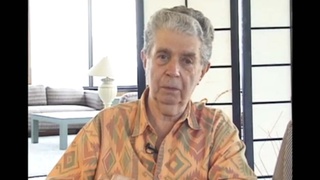Interviews
A teenager's memories of how a local newspaper misrepresented Japanese Americans
Back in 19... I think that was about '37, we used to have what you call a neighborhood gangs, we were like in our early teens, ten, twelve, thirteen in that area. And each neighborhood used to have their little turf that they covered. And right behind the City, City Light, there was an open vacant lot because it was unstable ground and they never fixed that area because of the slide. And we used to have slingshot fights, and we used to have maybe fifteen, twenty, thirty of each gang get together and we have a slingshot fight. And one day, I remember, the Seattle P-I came over and took pictures of us, and we thought, “Oh, this is great, we're going to be in the newspaper.” But I think the caption read that “The Japanese are, Japan is training the little kids to be future soldiers for Japan,” or something to that effect. When they start writing things like that you just take another view of what's going on.
Date: July 25, 1997
Location: Washington, US
Interviewer: Larry Hashima, Stephen Fugita
Contributed by: Denshō: The Japanese American Legacy Project.
Explore More Videos

Stereotypes about Japanese: past and present (Spanish)
(b. 1937) Professional journalist

Reaction to a 1942 speech by Mike Masaoka, Japanese American Citizen League's National Secretary
(1915 - 2011) Nisei florist who resettled in New York City after WW II. Active in Japanese American civil rights movement

First impression of New York City during war time
(1915 - 2011) Nisei florist who resettled in New York City after WW II. Active in Japanese American civil rights movement

Neighbors' sympathy after Pearl Harbor
(1915 - 2011) Nisei florist who resettled in New York City after WW II. Active in Japanese American civil rights movement

Interest in Japanese migration studies (Japanese)
Tsuda College President, researcher of Nikkei history

Experiencing discrimination as a child
Co-founder and creative director of San Jose Taiko




Identity crisis (Spanish)
(b. 1969) Former president of Centro Nikkei Argentino.

Dancing in Japan as an American, in the US as Japanese
(1918-2023) Nisei Japanese kabuki dancer

Lack of political power led to camps
(1924-2018) Researcher, Activist


World War II hysteria against Japanese in New York City
(1924-2018) Researcher, Activist

His testimony has more credibility because of his race
(1922 - 2005) Former U.S. Army counterintelligence officer
